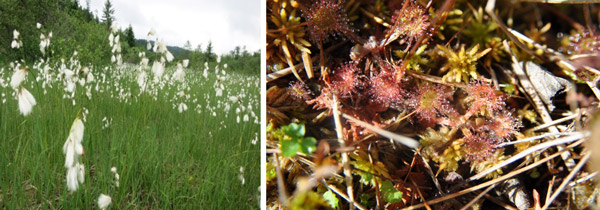Bogs
Bog habitats and their vegetation in Croatia, as well as in the Park, are relicts of the glacial period. Croatia is the southern limit of the distribution of this habitat type, characteristic for Central and Northern Europe. They are present on small areas, usually smaller than 1 ha, and are highly dependant on microclimate conditions. Highly specialised and very rare plant species, nowadays endangered, depend on this type of habitat: peat moss (Sphagnum sp.), the common sundew Drosera rotundifolia, the common butterwort Pinguicula vulgaris, the lesser bladderwort Utricularia minor, and a number of other species. They are at risk of extinction due to specific conditions. They can only be preserved by applying active protective measures (maintaining a favourable water regime and removing part of the vegetation).
Transitional bog (Natura code 7140) can also be found in the Park (Figure 1). This is the best preserved area of this type of bog in Croatia, where it is still possible to expect the active maintenance of this type of bog for a long time. Basophilic fens (Natura code 7230) are in a somewhat better state. Several examples can be found in different locations.

Figure 1 – Transitional bog with (a) the common cottongrass Eeriophorum angustifolium and (b) the common sundew Drosera rotundifolia

Figure 2 – Basophilic fen

